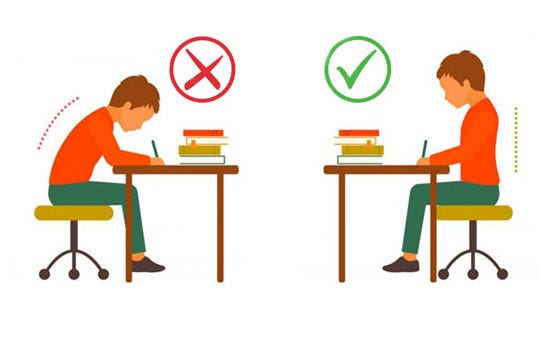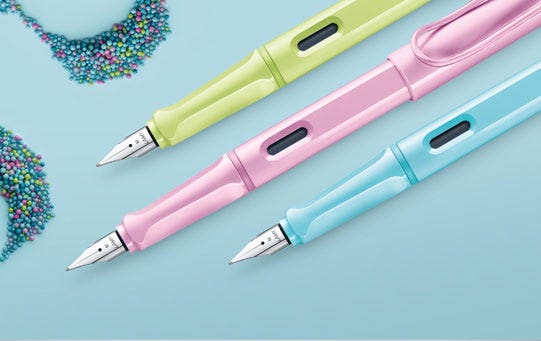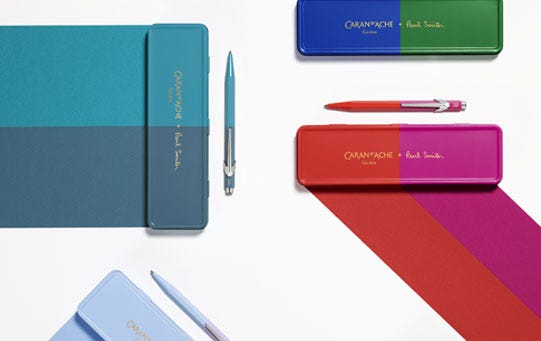A product has been added to the basket
Top 5: Ways to Improve Your Handwriting

Top 5: Ways to Improve Your Handwriting
Ask a graphologist – that is, a person who studies handwriting – and they’ll tell you there’s little you can’t learn about a person from the way they put pen to paper. From solving crimes and diagnosing illnesses, to determining a pair’s romantic compatibility, the study of a person’s handwriting has been used to uncover many secrets. While some of these examples might lack sound scientific backing, it is fairly uncontroversial to say that a person’s handwriting undoubtedly sends signals to the reader about the type of person they are.
 For many of us, however, this presents a problem. According to one study, for example, 1 in 3 adults in the UK struggle to read their own handwriting. It’s perhaps unclear exactly what message this sends, but it can’t be a good one! Besides, if you can’t read your own writing, how on Earth is anyone else to be expected to?
For many of us, however, this presents a problem. According to one study, for example, 1 in 3 adults in the UK struggle to read their own handwriting. It’s perhaps unclear exactly what message this sends, but it can’t be a good one! Besides, if you can’t read your own writing, how on Earth is anyone else to be expected to?
It’s possible we’re all just a little out of practice – another UK study from 2014 found that one third of respondents had not written anything by hand in the previous six months (It’s possible this is the same third as before…). It’s true that as technology develops, there is less and less necessity to write things out by hand, as more and more of our communication transfers to keyboards, phones and screens. But – as we’ve set out on this blog before – there are a number of important benefits to writing by hand that are missed through digital alternatives. And since none of us want to embarrass ourselves with a wonky scrawl that would make even the busiest of doctors blush, here are a few tips on how you can start improving your handwriting today.
1/ Are you sitting comfortably?

The word “handwriting” is a bit of a misnomer – our script is not determined simply by movements of the hand and wrist. Watch a person using a pen and notice just how much of the movement comes from the arm and the shoulder. What’s more, these finer movements directly correlate to how we position our whole body. So when taking care over your handwriting, first you must take care over your posture.
Sit straight at the table you’re writing on with your feet flat on the floor and your body in a relaxed, neutral position. Now, with your forearm resting on the table, gently curl the fingers you won’t be using into the palm of your hand. Do not tense up – everything must stay nice and relaxed; loose, but in control.
This is the ideal position to begin writing from, so try not to stray far from this. If you notice any creeping tension, stop, relax, reset. If you move onto a new line, or can’t reach a corner of the page – move the page , not your body.
2/ Get a grip!
Block out the words of your old primary school teacher that still ring in your ears – it turns out that whatever way you wish to hold your pen is valid! There is no strictly “correct” way to grip your pen, so go with whatever feels best for you. (This is especially important for you lefties out there – vindication at last!)

All that said, there are a few things which do matter. Grip your pen or pencil too hard, and you’re likely to experience cramps and prevent good, smooth movement. Keeping this in check will require a little bit of conscious effort, but the pay-off is worth it in the end. Make sure your fingers are light and supportive, not a death grip – they should be there as a guide, not a guiding force. If you feel yourself gripping too hard, stop what you’re doing and take a moment to correct it. Before too long it’ll be second nature.
3/ A pen that helps, not hinders
Yes, we’ve all heard the saying “a bad worker blames their tools”, but pay no heed: the pen you use can make a massive difference to the quality of your writing. It’s important to find the instrument that’s right for you, so look out for:
- The size and weight of your pen. As a general rule, if you have larger hands, you’ll want a weightier writing tool, whereas the smaller and more daintily-handed will prefer something more slight and light.
- The size of the tip. Pick a nib size that complements your handwriting – if it’s smaller, choose something finer; if your letters are bigger, you’ll want something broader.
- The pen quality. A sturdy, well-made pen that glides smoothly over the page without needing an extra push to get the ink flowing will make a massive difference, lessening the strain on your hand so you can concentrate on perfecting your writing.
- The pen grip. If you struggle to hold your pen in a way that is consistently comfortable, perhaps choose something ergonomically designed to help with finger placement. This should solve any issues you’ve been having.
4/ Check your working
 Anyone who’s ever learned a musical instrument will tell you the importance of practising your scales when studying and improving your technique. So let’s take the same approach to handwriting.
Anyone who’s ever learned a musical instrument will tell you the importance of practising your scales when studying and improving your technique. So let’s take the same approach to handwriting.
Start by writing out the alphabet. How does it look? Are your letters fully formed and legible? Are your ‘a’s, ‘e’s and ‘o’s the same size? What about your ascenders and descenders – are your ‘d’s the same length as your ‘p’s? Write the alphabet out again – does it look the same this time, or wildly different? Circle anything you’re not happy with, and set out to improve those aspects. Be your own strict teacher, and don’t let yourself get away with anything!
5/ Slow right down
Good things come to those who wait. Handwriting is a craft that deserves patience and diligence, so don’t expect miracles overnight. Allow yourself the luxury of time when practising your writing – carve out your letters slowly and carefully, taking care over each and every line and curve. Keep track of your progress in a notebook, and compare and contrast your letters as they improve. Above all else, though, there is one tactic that is bound to achieve results – practise, practise, practise!

If you, like us, believe in the importance of good pens and good penmanship, then scruffy, uneven handwriting can feel like such a let-down. So commit today to turning things around – it’s never too late to improve!










Comments